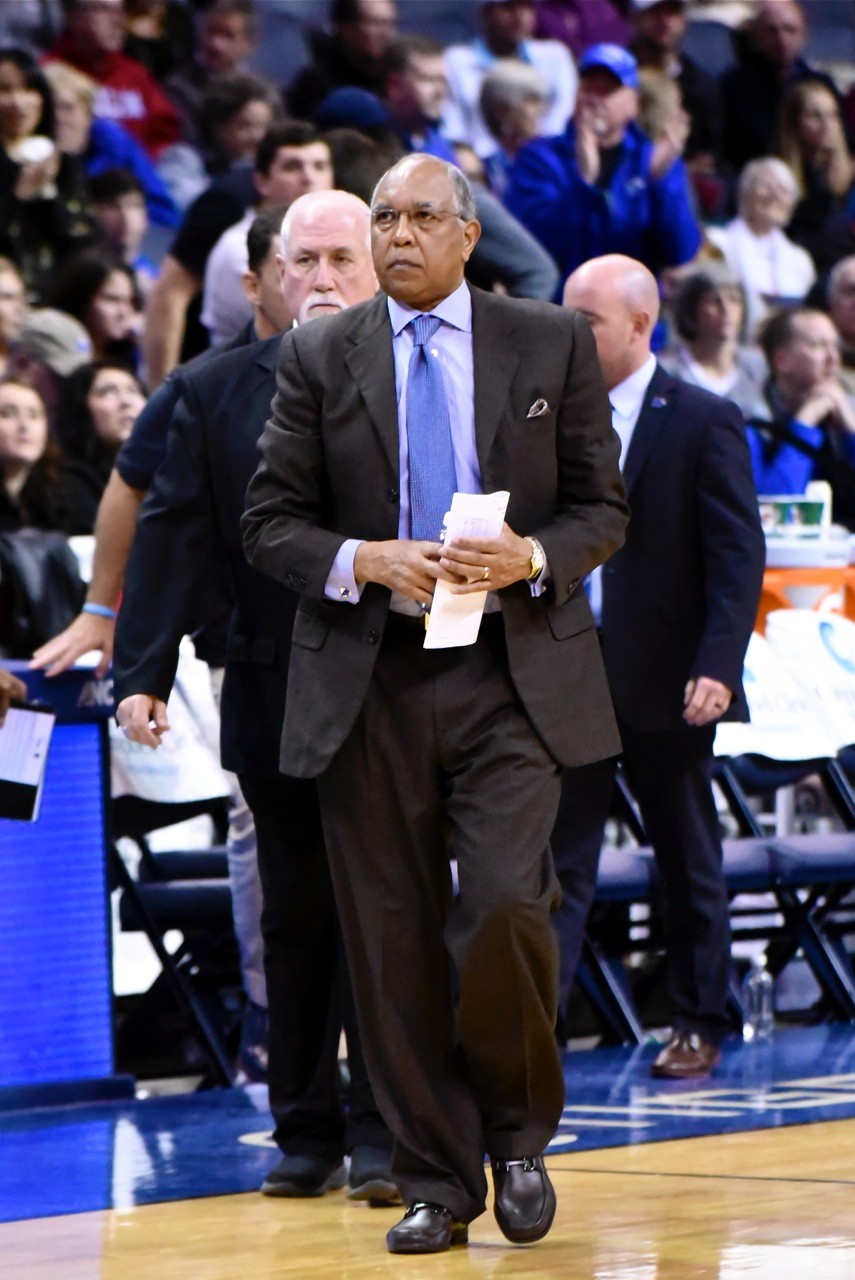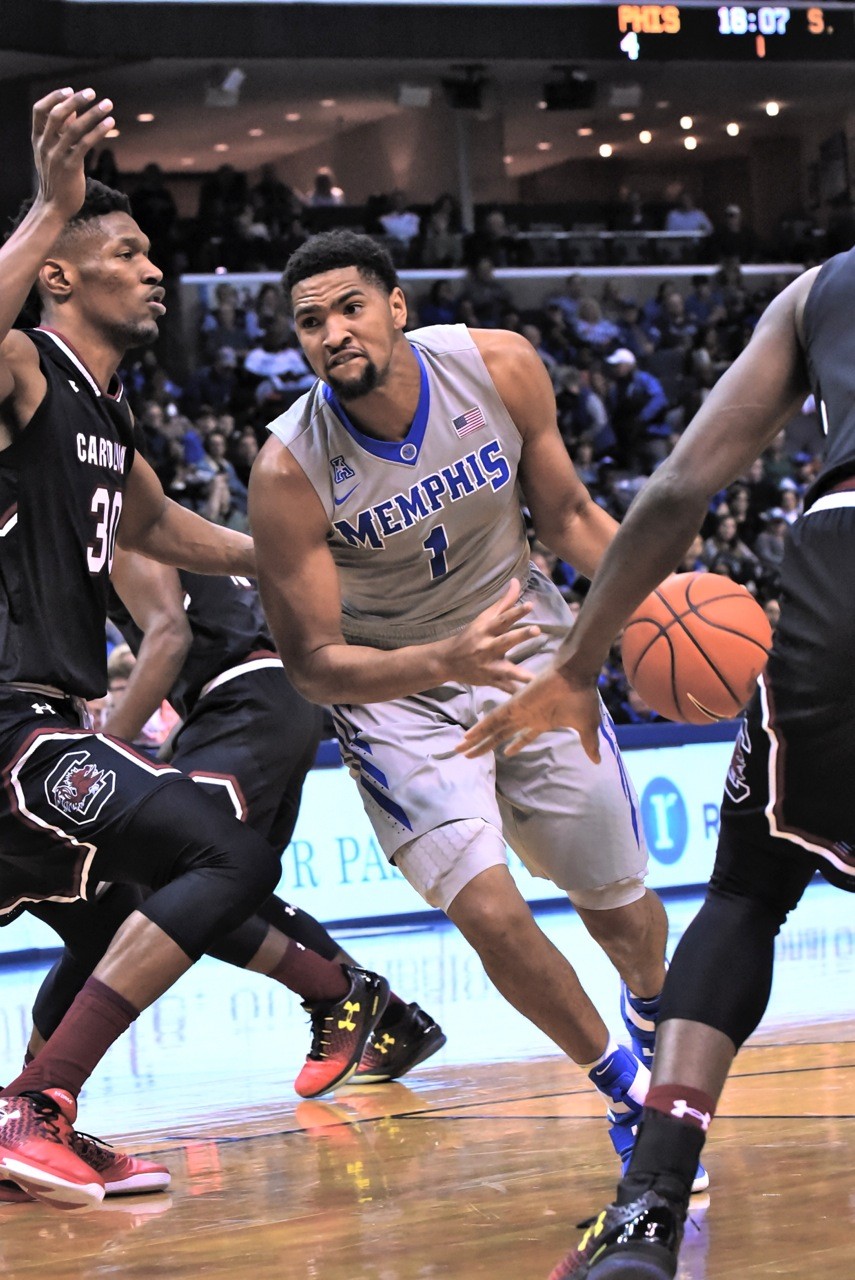With their win Sunday at Tulane, the Tigers passed the midpoint of their 2016-17 campaign. At 12-4, Memphis is one game better than it was after 16 games a year ago. The aim, of course, is to avoid the 4-9 stretch that destroyed Josh Pastner’s last season as head coach. You remember that six-week free-fall, don’t you? Losses to East Carolina (at home), Tulane, and South Florida, hardly American Athletic Conference title contenders.
Is this year’s team equipped to win more than 19 games? To contend for the AAC championship and an NCAA tournament bid?
Here’s what we’ve learned over the season’s first two months.
• Four horses. “Horsemen” would be too apocalyptic, so we’ll stick with the four-legged metaphor. The Tigers — like thoroughbreds in spring – will go as far as Dedric Lawson, K.J. Lawson, Markel Crawford, and Jeremiah Martin take them. Due respect to the rest of Tubby Smith’s roster, and the practice duty of players like Christian Kessee, Keon Clergeot, and Jake McDowell. Supporting casts are important when the cameras are off and the arena’s empty. But come game night, this basketball team may as well be the Beatles. Each of the four horses is averaging at least 30 minutes a game. (Last season, only Dedric Lawson averaged that many and six players averaged at least 20.) In eight games this season (half their schedule), at least three of these four players played 35 minutes. In the overtime win at Oklahoma on December 17th, they all played at least 40. In the four-point loss to SMU on December 27th, all four played all 40 minutes.
This is a dramatically different approach from last season, when Pastner would make as many as 15 substitutions before halftime. There’s risk, of course. A significant injury to any of the four horses would compromise not just the look of the team, but its very playing style. But if they can stay heathy — two games a week, that’s all — the kinship the four feel on the hardwood may go beyond anything the two actual brothers have known as teammates.
 Larry Kuzniewski
Larry Kuzniewski
Tubby Smith
• Tubby Smith can “develop” players. I’ll explain the quotation marks. The standard definition of “development” at the college level — in measuring a coach’s impact — is the improvement of a player under a coach’s guidance from one season to the next. Smith was not here last season, so can the astounding improvement of both Crawford and Martin be considered “development” under the first-year coach? If not, Smith should at least be credited with uncovering whatever these two guards had buried within themselves twelve months ago.
After averaging 2.7 points and barely an assist per game as a freshman (in 13.8 minutes per game), Martin is averaging 9.2 points and 4.8 assists. Better yet, he’s protected the ball, committing only 29 turnovers while averaging 33.9 minutes on the floor. And Crawford has been the team’s second-best player, improving his scoring average from 5.3 points per game as a sophomore to 15.4 this season. He’s averaging a healthy (for a guard) 4.9 rebounds per game, while applying the same defensive pressure that kept him on the floor his first two seasons. And call this an intangible, but Crawford seems to be enjoying basketball this season. He’s been healthy and productive, vocal and energetic. Reminds me of Antonio Anderson, the popular “glue guy” during the four-year, 30-wins-a-season period under John Calipari. Whether or not Smith deserves credit for developing Martin and Crawford, there’s a coach in Atlanta, Georgia, wondering where these two were a year ago.
• Number one. Joe Jackson wore this number proudly not that long ago, but sophomore Dedric Lawson is taking it places few Tigers have gone before. In averaging 20.4 points and 11.1 rebounds per game, Lawson has reeled off 13 double-doubles in 16 games and become only the ninth Tiger with 30 such games in his career. (Five Tigers had 40, the last being Kelly Wise.) If he maintains his scoring average, Lawson will join a Tiger Rushmore with 1,100 points in his first two college seasons (Penny Hardaway, Win Wilfong, Larry Finch, and Keith Lee).
 Larry Kuzniewski
Larry Kuzniewski
Dedric Lawson
Draft Express does not have Lawson being selected (first or second round) in its latest mock draft. NBADraft.net has him going in the second round (49th). He’ll have to get stronger to make an impact as a professional that approximates what he’s done as a teenager in college. (Lawson turned 19 last October.) But he is a college star of the first order, worthy of larger crowds than he’s seen at FedExForum to this point. (Fewer than 11,000 fans attended last week’s victory over once-mighty UConn.) The hope must be that Lawson stays healthy and leads this team to postseason play, where more of the country will enjoy his talents, and a few scouts might adjust their mock drafts.
• Steady as she goes. I’ve attended countless postgame press conferences over the last decade. Calipari liked to entertain or play the role of grouch. Pastner became predictable, deferring to his players and coaches in good times, leaning on his positive-energy crutch when times got rocky. I’ve been struck this season by Smith’s quite-casual fielding of questions, and honest responses, sometimes to a fault. (“We probably should have used our bench more in the second half,” he said after the UConn game. Imagine Calipari offering genuine self-criticism . . . after a win.) Smith brought a quarter-century of head-coaching experience with him, but has engaged himself with the talents — yes, they’re limited — of this specific team.
“We’ve got some self-motivated kids, who love to play the game,” said Smith after a blowout win over McNeese State in November. “Today, it was about sharing the basketball. There wasn’t a whole lot of strategy we had to change at halftime. Don’t look at the scoreboard. Concentrate on getting better. Sometimes that’s hard to do. I’ve had players try to get outside their comfort zone. When that happens, I recognize it, and the team recognizes it. So play the right way. It’s a team sport. Like anything else, you can accomplish a whole lot if you don’t care who gets the credit.”
This is a down year for the AAC. It’s hard to imagine a team reaching the NCAA tournament without winning 13 or 14 league games (out of 18). Eleven wins in their final 15 games would get the Tigers to 13-5 in the AAC and 23-8 entering the conference tournament in Hartford. That’s a lot to ask from a team with no measurable depth and little size. But with a wise, grounded coach at the helm and a certifiable star on the floor 35 minutes a game, these Memphis Tigers could surprise come March. Just play the right way.